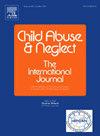极端天气事件如何助长暴力侵害儿童行为?
IF 3.4
2区 心理学
Q1 FAMILY STUDIES
引用次数: 0
摘要
背景:直到最近,研究和政策才开始关注极端天气事件(EWEs)对儿童遭受暴力的影响。然而,极端天气事件与针对儿童的暴力(VAC)之间的联系仍然没有得到充分的理论研究,人们对其了解甚少,在政策和实践中也往往不被承认:确定、综合并分析影响暴力侵害儿童行为与幼儿预警之间关系的核心特征和因素的现有证据:我们对文献(学术文献和灰色文献)进行了广泛的范围界定审查,以确定现有研究和知识空白。我们使用灵活、反复制定的搜索条件,确定了直接暴力--身体暴力、性暴力和情感暴力--以及植根于不公平、不公正的制度和机构的结构性暴力:结果:暴力侵害儿童行为与预警和预警系统之间的关系与性别、气候引起的流动性或不流动性、童工和健康有关。我们发现,脆弱性和适应会在预警期间加剧,但这种关系的性质因具体情况而异。脆弱性和适应与 EWE 之间的关系植根于历史上的不公正、全球体系和结构,因此对贫困人口的影响尤为严重:研究揭示了幼年外出后不断增加的社会、经济和情感压力如何增加了儿童遭受暴力侵害的风险。这可能发生在他们的家中或救济收容所。暴力可能涉及同龄人,也可能涉及年轻人因家庭突然需要重建或帮助维持生计而被迫从事的危险劳动。我们需要了解更多的知识,以便制定综合的、针对具体情况的、对文化敏感的计划,更好地保护儿童免受预警和紧急事件的影响。本文章由计算机程序翻译,如有差异,请以英文原文为准。
How do extreme weather events contribute to violence against children?
Background
Only recently have research and policy begun to shine a light on the magnifying effects of EWEs (Extreme Weather Events) on children's exposure to violence. However, the links between EWEs and VAC (Violence against Children) remain under-theorised, poorly understood and often unacknowledged in policy and practice.
Objective
Identify, synthesize and analyse available evidence on the central characteristics and factors influencing the relationship between VAC and EWEs.
Methods
We conducted an extensive scoping review of the literature (academic and grey) to identify existing research and gaps in knowledge. Using flexible and iteratively developed search terms enabled us to identify direct violence – physical, sexual and emotional – and structural violence, rooted in inequitable and unjust systems and institutions.
Results
The relationship between VAC and EWEs is linked to gender; climate-induced mobility or immobility; child labour; and health. We found that VAC can intensify during EWEs, but the nature of this relationship is contextually specific. The relationship between VAC and EWEs is rooted in historical injustices, global systems and structures, and therefore disproportionately affects those living in poverty.
Conclusion
Studies have uncovered how increasing social, economic and emotional pressures following EWEs increase children's violence risk exposure. This may occur in their homes or in relief shelters. The violence may involve peers, or forms of hazardous labour that young people are compelled into because of the sudden need for families to rebuild or help make ends meet. More knowledge is needed to inform integrated, context-specific and culturally sensitive plans to better protect children from the consequences of EWEs.
求助全文
通过发布文献求助,成功后即可免费获取论文全文。
去求助
来源期刊

Child Abuse & Neglect
Multiple-
CiteScore
7.40
自引率
10.40%
发文量
397
期刊介绍:
Official Publication of the International Society for Prevention of Child Abuse and Neglect. Child Abuse & Neglect The International Journal, provides an international, multidisciplinary forum on all aspects of child abuse and neglect, with special emphasis on prevention and treatment; the scope extends further to all those aspects of life which either favor or hinder child development. While contributions will primarily be from the fields of psychology, psychiatry, social work, medicine, nursing, law enforcement, legislature, education, and anthropology, the Journal encourages the concerned lay individual and child-oriented advocate organizations to contribute.
 求助内容:
求助内容: 应助结果提醒方式:
应助结果提醒方式:


